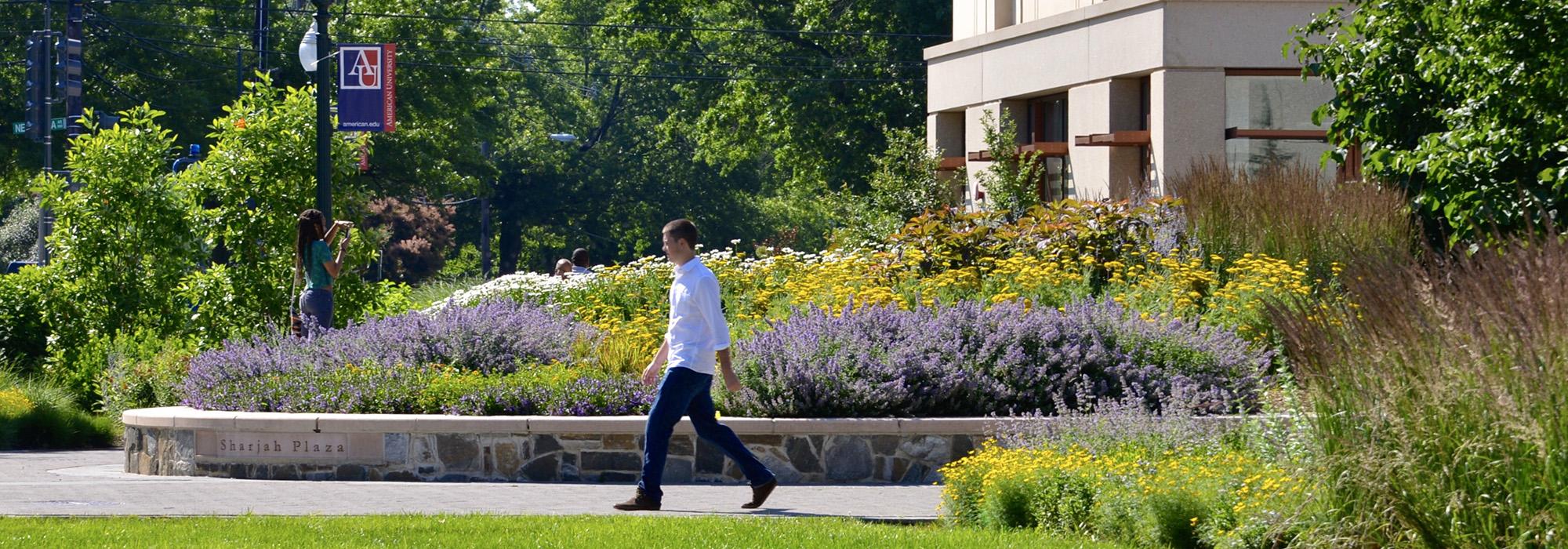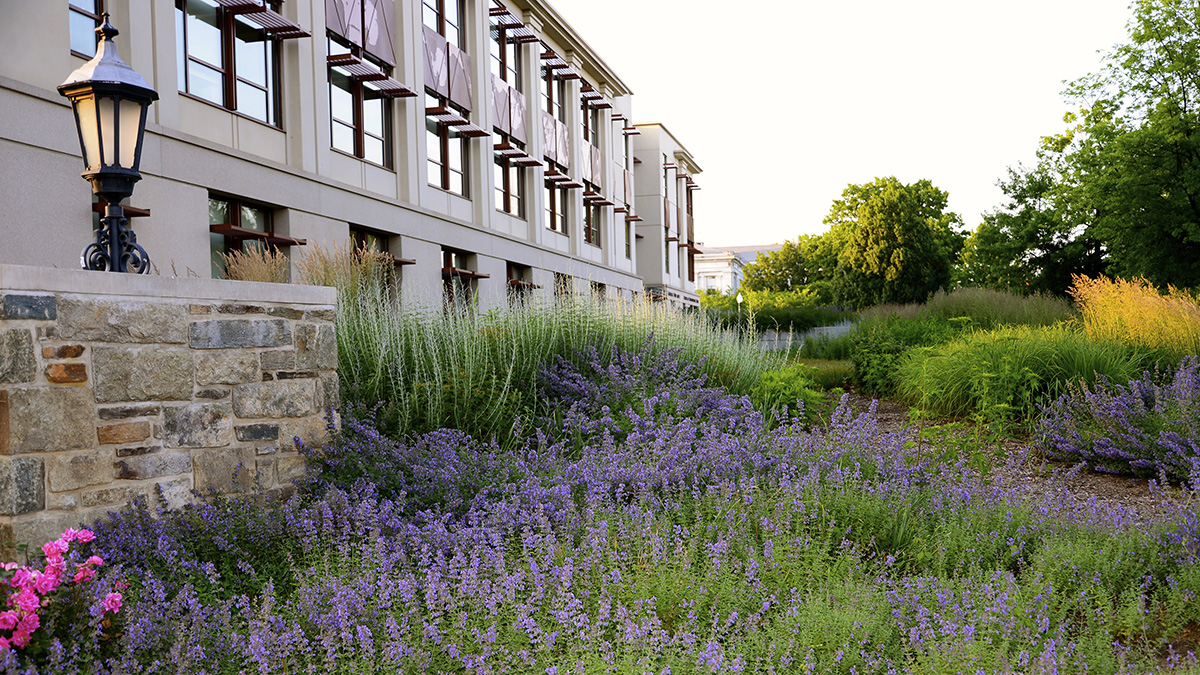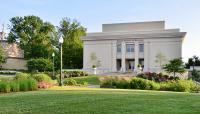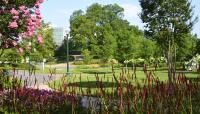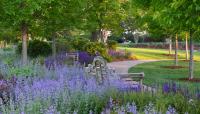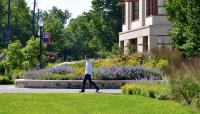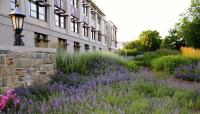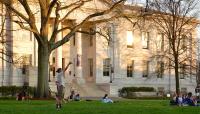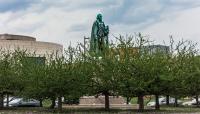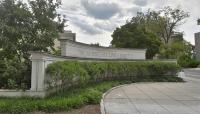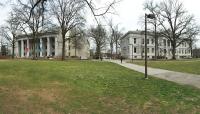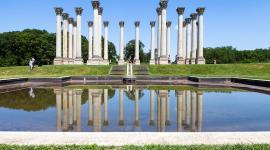Landscape Information
Incorporated by the District of Columbia in 1891 and chartered by the U.S. Congress two years later, this university opened as a co-educational institution in 1914. The initial 90-acre campus was laid out on the former grounds of Fort Gaines by Frederick Law Olmsted, Sr., between 1891 and 1896, working with the architectural firm Van Brunt & Howe. However, Olmsted’s plans were left incomplete due to financial constraints, and much of his design was lost to subsequent development in the late twentieth century. Beginning in 1996, the university launched a landscape improvements initiative that transformed the campus into an arboretum by 2003. Led by campus landscape architects H. Paul Davis and Mike Mastrota, the initiative also added gardens, bioretention swales throughout the grounds, and over a dozen green roofs.
Located at the junction of three residential developments in northwest Washington, D.C., the university spreads over some 84 acres between two contiguous campuses split east to west by Nebraska Avenue. On the Main Campus remnants of Olmsted’s and Van Brunt & Howe’s original L-shaped plan can still be seen in the Eric Friedman Quadrangle, a linear mall since bookended by the circular Kay Spiritual Life Center and the Bender Library. The university expanded substantially after World War II, with some nineteen buildings designed by architect Avery Faulkner. During this time landscape architect Lester Collins consulted on the new additions. Various open-air features are nestled throughout the grounds, including the Woods Brown Amphitheatre (1954), shaded by large tulip poplars, dogwood and magnolia trees; the Katzen Sculpture Garden (2005); and Ann’s Garden (2017), whose various perennials, herbs, and bulbs serve as a plant library. The campus features more than 500 different woody plants and more than 4,000 trees. Formerly part of the Gilbert Grosvenor estate, the eight-acre East Campus was transformed from a parking lot into a residential and academic complex by Stantec and Wiles Mensch Corporation in 2016.



